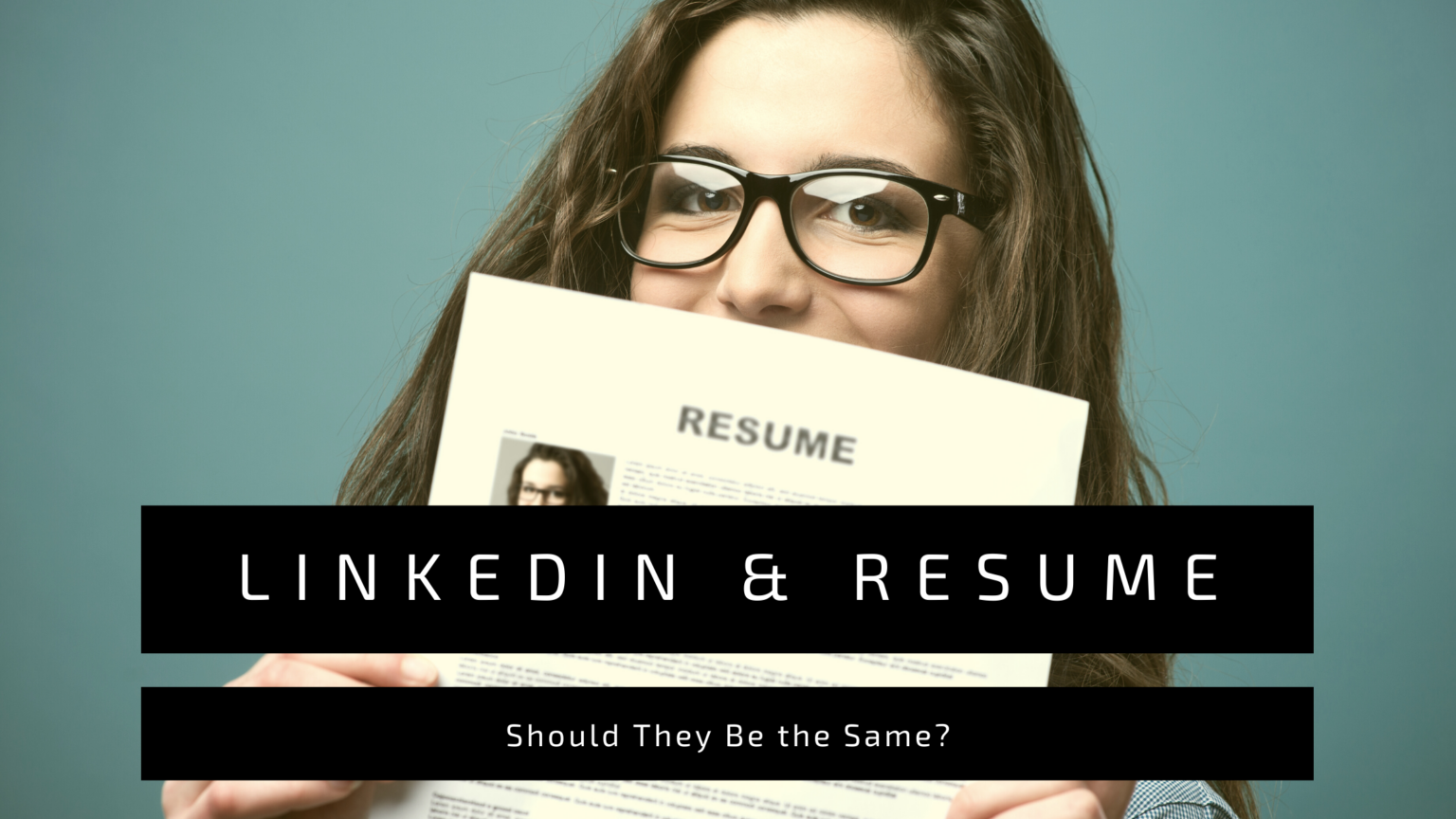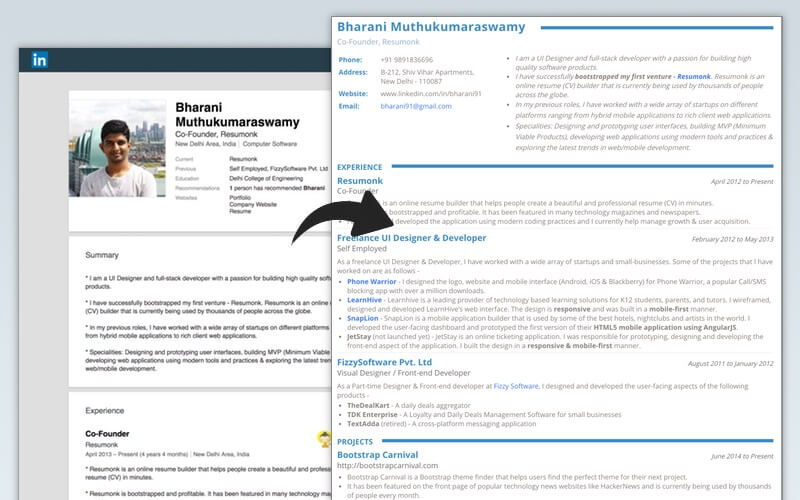In today's fast-paced job market, your LinkedIn profile and resume serve as your calling cards to potential employers. It's essential to present a cohesive image that accurately reflects your professional abilities and experiences. But the question arises: should your LinkedIn profile align with your resume? In this post, we’ll explore why it's crucial for these two essential documents to match and how consistency can impact your job-search journey.
The Importance of Consistency

Now, let’s dive into why having a consistent LinkedIn profile and resume is not just a good idea, but downright essential for your career advancement. When a hiring manager views both documents, consistency assures them of your credibility. Here's why this matters:
- First Impressions Count: Your LinkedIn profile often serves as the first impression, especially since many recruiters check this platform before interviewing candidates. A discrepancy might raise red flags and lead them to doubt the authenticity of your applications.
- Holistic Representation: A well-aligned profile and resume offer a comprehensive view of your career. When both documents tell the same story, they help employers understand your professional journey seamlessly.
- Search Optimization: Many recruiters use LinkedIn’s advanced search features to find candidates. By aligning your profile with your resume, you can optimize keywords that reflect the roles you’re targeting, increasing your chances of being discovered.
- Professional Branding: Consistency in your documents helps reinforce your personal brand. It communicates that you are serious about your career and intentional in how you present your professional self.
Ultimately, ensuring that your LinkedIn profile and resume are synchronized not only boosts your chances of landing interviews but also lays a solid foundation for your professional reputation.
Key Elements to Match between LinkedIn and Resume

When it comes to aligning your LinkedIn profile with your resume, there are some key elements we really need to pay attention to. Consistency here is crucial, as you want potential employers to see a coherent narrative about your professional journey. Let’s dive into the most important areas where alignment is essential.
- Job Titles: Your job titles should be consistent across both platforms. If you held a position as “Marketing Manager” on your resume, don’t list it as “Marketing Lead” on LinkedIn. Keep them the same to avoid confusion.
- Work Experience: Your employment history should reflect the same roles, dates, and responsibilities. Highlighting your achievements is great, but the essence should match.
- Skills: List skills that are relevant to your industry on both platforms. These should not only reflect what you’re good at but also what you want to be known for professionally.
- Education: Ensure that the educational background listed is identical. Include degrees, schools attended, and graduation years. This consistency builds trust.
- Professional Summary: Both your LinkedIn summary and your resume summary should encapsulate your professional persona. Though worded differently, the core message should remain the same, outlining your career goals and core competencies.
Matching these elements will help create a unified identity that resonates with employers, making it easier for them to get a clear picture of who you are professionally.
When to Diverge: Unique Aspects of LinkedIn

While it’s important to align your resume with your LinkedIn profile, there are some instances where it’s perfectly acceptable – and even advisable – to take a different approach. Let’s explore the unique aspects of LinkedIn that allow for some divergence.
- Personality: LinkedIn is more than just a professional portfolio; it's also a platform for networking. Your profile can be more personal and engaging. Feel free to add a touch of your personality in your summary or through posts.
- Recommendations: Take advantage of LinkedIn’s recommendation feature. You can't do this on your resume. Having others vouch for your skills and professional demeanor can really elevate your profile.
- Endorsements: On LinkedIn, you can receive endorsements for specific skills from your connections. This feature provides social proof that can be valuable in making you stand out.
- Multimedia Elements: LinkedIn allows you to showcase your work visually. You can add presentations, videos, or links to projects that you can’t do on a traditional resume. Use it to enhance your professional story!
- Broader Networking Opportunities: Unlike a resume, which is often sent directly to hiring managers, LinkedIn profiles serve as a platform for building connections. Use the platform to join groups and participate in discussions relevant to your industry.
Embracing these unique aspects allows you to leverage LinkedIn not just as a digital version of your resume, but as a vibrant, multi-dimensional view of your professional life.
5. Best Practices for Alignment
Aligning your LinkedIn profile with your resume is more important than you might think. It not only streamlines your job search but also reinforces your personal brand. Here are some best practices to ensure consistency:
- Use Similar Language: Make sure the terminology and phrases you use in both your LinkedIn profile and resume are consistent. This helps create a cohesive narrative about your professional journey.
- Highlight Achievements, Not Just Responsibilities: Whether in a resume or on LinkedIn, focus on what you accomplished in each role. Use action verbs and quantifiable results to demonstrate your impact.
- Sync Your Job Titles: Ensure that the job titles on your resume match those on your LinkedIn profile as closely as possible. If you have a different title at work compared to what was used commonly in the industry, consider using the more recognizable title on LinkedIn.
- Keep Dates Consistent: Make sure the dates of your employment (start and end) match perfectly. Discrepancies can raise red flags for potential employers.
- Check Your Skills Section: The skills on your LinkedIn should reflect relevant skills listed on your resume. These should highlight your strengths and expertise, ensuring recruiters find the same information across platforms.
Lastly, take time to regularly update both your LinkedIn and resume. This way, when you accomplish something new, like completing a project or earning a certification, you'll ensure both platforms reflect your most current status.
6. Conclusion
In today’s digitally-driven job market, having aligned profiles across your LinkedIn and resume isn’t just a good idea; it’s crucial! Your LinkedIn serves as an online extension of your resume, providing a more personal touch and a broader platform to showcase your skills, experiences, and professional network.
When you keep these platforms in sync, you create a unified professional image that resonates with recruiters and hiring managers. They appreciate clarity and consistency—and when they see the same accomplishments and information presented across both mediums, it builds trust in your candidacy.
Remember, the goal is not just to present yourself in a professional light, but also to tell a coherent and compelling story about your career journey. As you move forward, regularly revisit both your resume and LinkedIn profile to ensure they reflect your growth and any new achievements.
In summary, taking the time to align these two vital sources of information could be the key to unlocking new career opportunities. So go ahead and apply these best practices today!
 admin
admin








